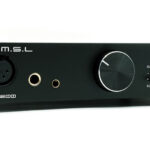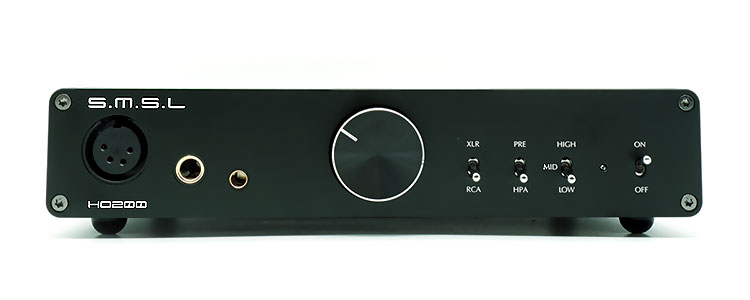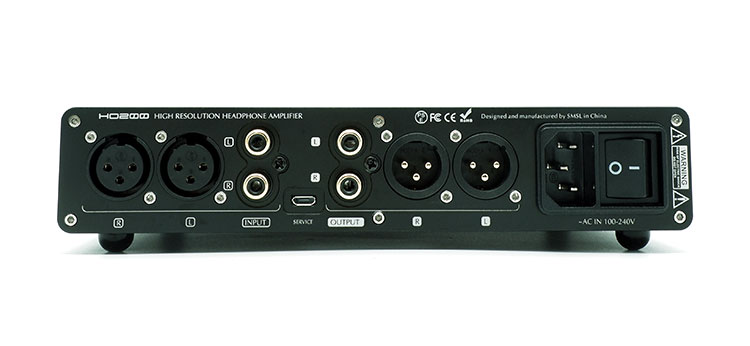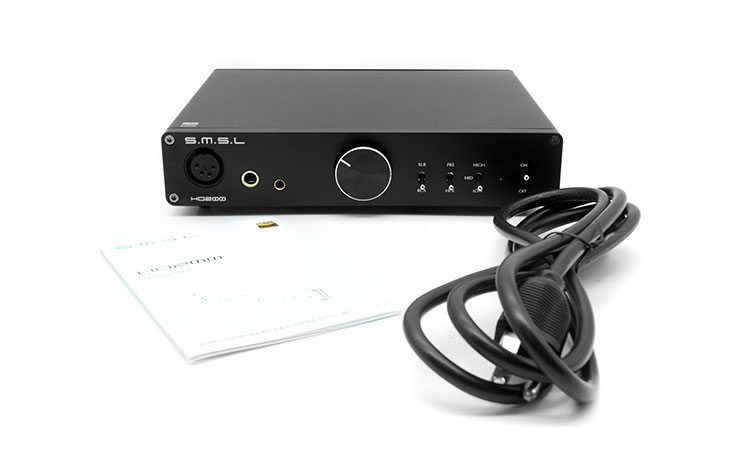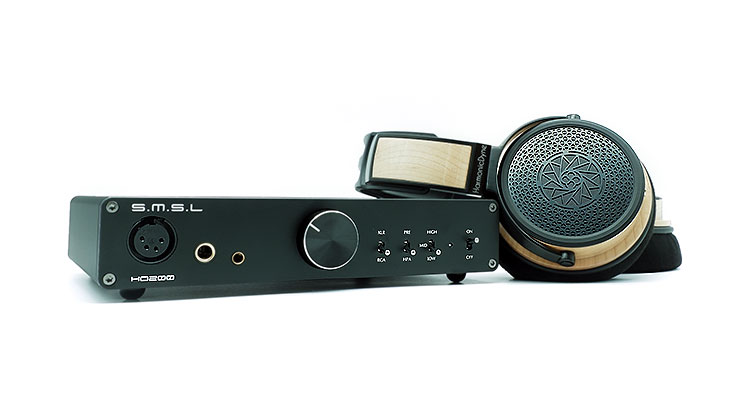SMSL HO200 is a fully balanced solid-state desktop headphone amplifier offering up to 3W of output power into a 32ohm load. It is priced at $399.
Disclaimer: The SMSL HO200 sent to us for this review is a sample in exchange for our honest opinion. We thank Aoshida Audio and SMSL for giving us this opportunity.
To read more about SMSL products we have reviewed on Headfonics click here.
Note, this 2-page review follows our new scoring guidelines for 2021 which you can read up on here.
While SMSL has been continually releasing products like clockwork, it’s interesting to see that all of SMSL’s products are properly designed and differentiated from each other. While some products may seem similar on paper, closer examination allows us to learn that some distinct characteristics make them unique.
A few months ago, we had the privilege to review the SMSL AO200, which is a class D integrated amplifier that is an exclusive collaboration between SMSL and Aoshida Audio. Now, SMSL has released another collaboration with Aoshida Audio, but this time it’s a headphone amplifier in the same chassis as the AO200, the HO200.
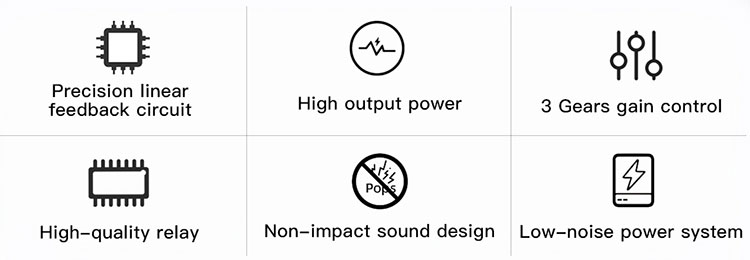
Tech Highlights
The current trend in headphone amplifiers is competing for diminishingly low distortion numbers while offering a high power output rating.
Currently, there are a few topologies that can achieve these types of THD numbers such as THX AAA, Topping’s NFCA, and then there’s the Precision Linear Feedback Circuit from SMSL. This technology was first released a few months ago with their SH-8s, and it’s used again with their latest release, the HO200.
Aside from the PLFC technology, the HO200 is supplied with an ultra-low noise power supply that has an SNR of 140dB, or a ripple of 1uV. The PLFC implementation on the HO200 has a diminishingly low distortion of just 0.00006% or 123dB. This also allows the HO200 to have a wide dynamic range of up to 140dB.
The HO200 is also equipped with high-quality resistors which will minimize pops that are due to switching transients. This ensures that headphones that are connected to the HO200 will not be subjected to transient voltages that may in turn damage the headphones that are connected to the amplifier.
Design
The chassis on the HO200 is mainly made of aluminum painted in matte black. So the amplifier is mainly black, except for some silver accents because of the traditional switches and the silver accent ring on the volume knob.
Right in the middle of the front fascia is the volume knob, which makes the front look fairly balanced. Then to the left are the headphone outputs, where options for both a balanced 4-pin XLR and a 4.4mm pentaconn, as well as a ¼” single-ended output, are all available.
On the left of the volume knob are the classic toggle switches that are used to control the different functions of the amplifier.
The rear of the device has a standard IEC connector with a physical power switch which physically disconnects the amplifier from mains power. Then there are the inputs, and outputs that are properly spaced to ensure that plugging things in will mostly be a comfortable experience.
The overall weight of the device is substantial at 1.2kg, so it feels relatively heavy for the size when you pick it up. It’s larger than most of the SMSL components that I’ve become accustomed to, as it’s around a half-width chassis, instead of the 1/3 width chassis of previously reviewed SMSL units.
I/O
Being a full-featured headphone amplifier, the HO200 has 3 output options. There is a balanced output in 2 available formats, accommodating both 4-pin XLR and 4.4mm pentaconn which are electrically connected internally. Then there’s a ¼” headphone output that is separate from the balanced connections.
At the rear, there is of course the power input, then there are 2 input options having both a single-ended and balanced input option. On the right of these inputs are the preamp output options, where there is both an option for balanced or single-ended output.
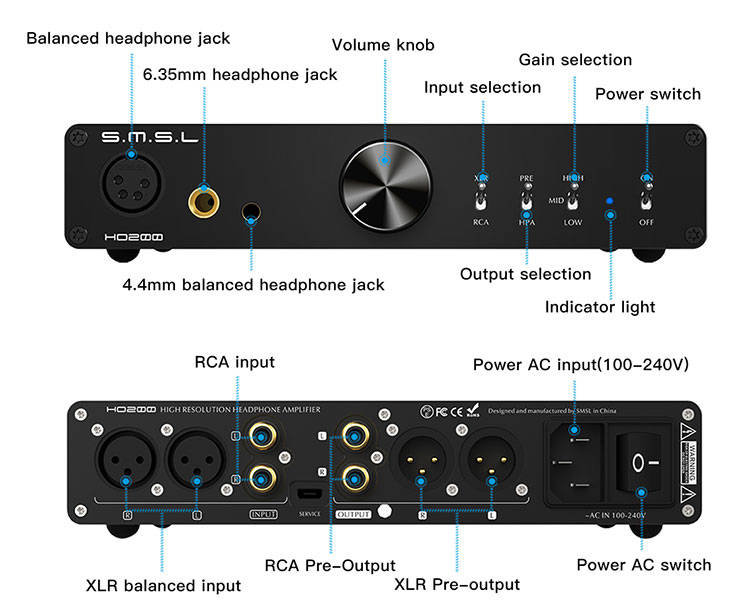
Controls
While the HO200 has a lot of functions built-in, all the controls are done using the switches and the volume knob in the middle. The first thing that I noticed is that SMSL made sure that the power switch is accessible both in front and at the rear of the device, so the HO200 has a power switch on the left-most portion of the front fascia.
Then there are input controls where you’re given an option to choose between XLR or RCA. Right next to that is a preamp or headphone amplifier switch, which switches the output to either the front of the pre-amp outputs at the rear of the HO200.
Finally, there is a 3-way gain switch that will allow the HO200 to be versatile enough to either have better distortion numbers for more sensitive headphones, or more power for lower sensitivity headphones.
Packaging & Accessories
The HO200 arrives in SMSL’s standard packaging, where there is a hard cardboard outer sleeve that has a picture of the amplifier and the model name of the product. Then inside there is another cardboard box that contains the product itself.
Inside the box, there is enough foam packaging that ensures that the HO200 and the other accessories are kept safe during storage and travel. Aside from the amplifier itself, there isn’t much by way of accessories, since it only includes a power cable and the manual. But this is what I have come to expect from most SMSL headphone amplifiers.
Sound Impressions
Summary
According to the specs sheet, the HO200 has a ruler flat frequency response, and I believe that this is accurate. There isn’t any particular frequency that is emphasized compared to the rest of the frequency spectrum.
While the HO200 has lots of power to drive most headphones that I can throw at it, it remains composed despite turning up the volume. This ensures that the HO200 won’t become too excited, staying away from making any track too fatiguing during longer listening sessions.
Timbre
On first listen, the most evident feature of the HO200 is its ability to resolve details throughout the frequency range. There is an incisive amount of texture from the bass, all the way to the treble frequencies. This allows for details such as textures in drum hits to be immediately apparent while the vocal texture is also easily picked up.
When listening to songs with heavy drums, there is an immediate sense of attack while having textures that present the size of the drum cavity. Bass guitars are also equally textured, but the decay of each note is quicker than I’ve come to expect. The light-footed nature of the HO200 makes drum hits and bass notes quicker overall while lacking a sense of girth in each note.
The vocal presentation on the other hand is very honest, as the HO200 easily conveys vocal texture without embellishing the vocals with any euphony.
Pianos and guitars also retain an honest presentation, allowing it to have an immediate sense of attack, while having a neutral presentation, so recording quality will easily be evident.
To ensure that there won’t be any sibilance in its presentation, the HO200 has a more smoothed over treble region. Making cymbal hits pleasant while easily blending with the rest of the music.
However, I would have wanted to hear more bite with cymbal hits, as they pulled back in terms of both weight and attack. Although the treble is extended well, there is no emphasis on the upper treble extension.
Staging & Dynamics
The overall width of the environment that is created by the HO200 can be classified as intimate, where objects tend to be brought a bit closer than usual. However, when both the upstream and downstream equipment allows it, the HO200 can still accurately reproduce the environment, recreating a sense of the size of the environment.
With the HO200, creating a center image is simple enough, but I typically find the center images right in the middle of my skull while the placement of the rest of the instruments is properly placed relative to the center image.
Despite images typically overlapping, there is still a respectable amount of layering within the soundstage, allowing some objects to sound a bit further than the rest, but rarely beyond my head.
On the specs sheet, it says that the HO200 can produce a wide dynamic range, and in reality, it really can do this well. With pianos, the softer keystrokes are still evident, while crescendos still communicate the sense of emotion well.
Synergy
Power
On paper, the HO200 has enough power to drive most headphones that I can think of, and with my testing, I believe that the numbers don’t lie. On medium gain, it can easily power my planar headphones that include the LCD-X and the Sendy Peacock.
With higher impedance headphones, on the other hand, the HO200 also does a good job powering my Sennheiser HD600 on high gain at around 9 o’clock. With the HarmonicDyne Poseidon, the HO200 comfortably powered the headphones to my loudest listening levels at around 12 o’clock on medium gain.
On the flip side, the HO200 is still quiet enough to power IEMs such as the FiiO FD3, or the Mangird MT4 on low gain. I believe that the HO200 has its bases covered as far as powering headphones is concerned.
Pairings
With the gentler nature of the HO200, I figured that maybe the more energetic and dynamic Audeze LCD-X would make a great pairing with it. Running the LCD-X on the HO200 gave me a generally neutral response while ending up being a bit too laid back, almost stepping into a lethargy.
Switching over to a dynamic driver headphone, I plugged in the Harmonic Dyne Poseidon, which I recently reviewed as well. While both the Poseidon and the HO200 are generally neutral, the more energetic nature of the Poseidon allowed the gentler nature of the HO200 to work to its advantage making this pairing truly balanced.
The more airy nature of the Poseidon also allowed the distinctly neutral presentation on the HO200 to breathe a bit more.
IEM pairings also worked well with the HO200, with the FiiO FD3 working particularly well. Where there is a warmer and energetic nature that’s dialed down a few notches while being imbued with more airiness and space due to the semi-open back design of the FD3.
Having the same topology as the SH-8s, I figured that the HO200 would also make a good pairing with the SU-8s DAC. With the warmer tilt of the SU-8s DAC, the HO200 is induced with a bit more energy while keeping most of the HO200’s honesty intact.
Click on page 2 below for select comparisons


